
No two people, let alone architects, perceive even the most frequented cities in the same way. How do designers experience their cities as locals?
A tumultuous sequence of political upheaval and renewal just within the last century has transformed Warsaw into a bustling incubator of creativity for architects, designers, and artists — and the world is taking notice. For a glimpse into the city's emerging design scene, Archinect reached out to Four O Nine co-founder Lukasz Kos, who manages the practice's Warsaw office (Also see Andrei Zerebecky's Shanghai guide). Kos shared some can't-miss spots around town that he would recommend to the architecturally inclined traveler.
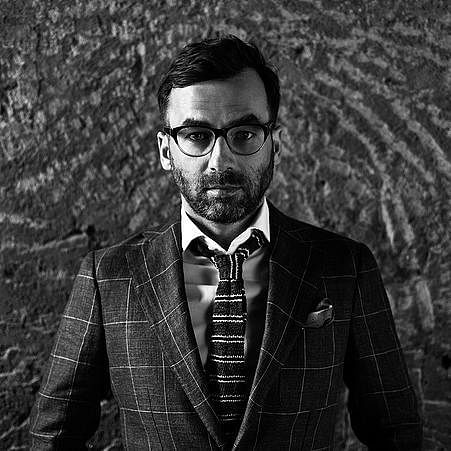
Lukasz Kos. Photo via.
Warsaw is a city with a recent history of violent changes. In the span of the last 100 years it has seen colonization twice by the Russians; experienced cruel and nearly complete destruction at the hands of the Germans, leaving the city of over one million with just 1,000 occupants after WWII; slaved through a forced classicist reconstruction under Stalin; drugged through 30 years of half hazard modernist development under communism; followed by 20 years of seemingly laissez-faire adaptation to capitalism. Arguably, no other city in Europe has experienced the mix of urban upheaval and renewal that Warsaw has in the last century.
However, out of the smoke and ash of the last 100 years, a new generation of young Warsovian architects and architecture is emerging. Along with a new openness to foreign architects often from countries that have enjoyed sustained periods of uninterrupted development, Warsaw has the potential to transform into a laboratory for 21st century post-industrial/post-ideological architecture and urbanism. This first introduction to contemporary architects in Warsaw, aims to illustrate attempts at yet another redefinition of the urban fabric of the city. One that is concerned with acknowledging the past, while in adapting to current needs in a mature and thoughtful manner. — Lukasz Kos
Sluzewski Cultural Center
by WWAA + 307kilo (formerly 137kilo), Warsaw

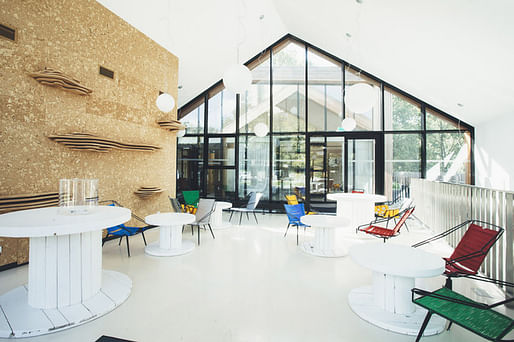

Project text by WWA Architects: "The existing, original cultural center was also a source of inspiration, together with the adjacent ecological, educational farm and a survived country house at 7 Tarniny Street...Accordingly, the architecture of the object is restrained and friendly; by using possibly contemporary means it tries to interconnect the traditional elements of urban layout with simple, natural finishing materials. An unpretentious building, submerged in the greenery, is supposed to be the background for events happening there."
POLIN Museum of the History of Polish Jews
by Lahdelma & Mahlamäki Architects, Helsinki
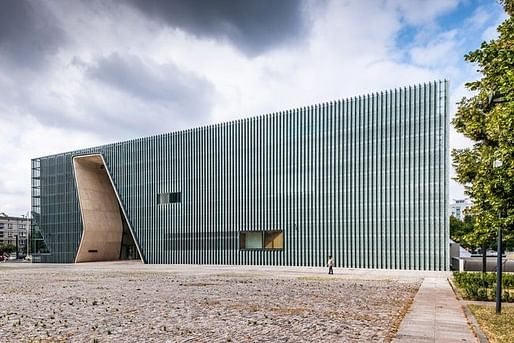
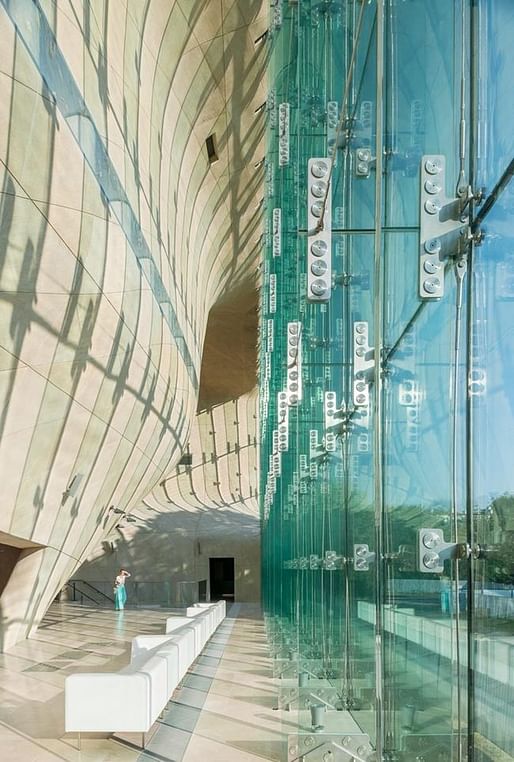

Project text: "The museum functions as a multifunctional center for the research and exhibition of Jewish heritage, education and culture. The main permanent exhibition is located under the main hall in a large exhibition space of 5000 m2. Special built-in milieus present the different aspects of the history of the Polish Jews. The main task of the exhibition is to present different phases and forms of Jewish culture starting from medieval times to present day – the Holocaust is only one of the themes of the exhibition...The [museum is located on Willy Brandt Park], which was rebuilt after the war. The history of the park is tragic as it was part of the Jewish ghetto during the war."
Maison Keret
by Jakub Szczęsny Architekt
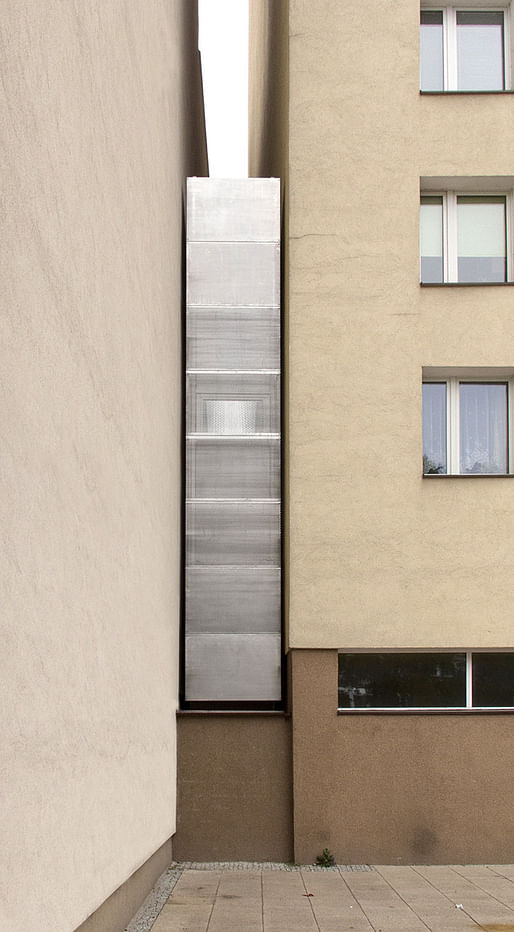

Project text: "The present form of Warsaw is a result of the very painful history of the city and subsequent urban decisions...Warsaw is full of unexpected solutions and mysterious places created by the former tissue of the city and the fact that it is not united with the contemporary, growing urban structure. This process produced literal cracks within the urban system, which function as non-productive void spaces.
Jakub Szczęsny decided to fill such a crack, to restore its existence by turning it into a perfectly functional living space and by inviting somebody to take care of this space. The architect designed a House, which, despite its microscale caused by the size of the plot, constitutes a functional space – a place to live. Szczęsny invited an Israeli writer of Polish descent – Etgar Keret to live in the House..."
Soho Factory
by Projekt Praga, Warsaw

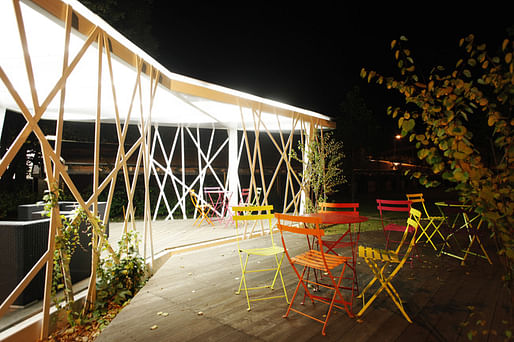
Architects' project text: "The eight hectare Soho Factory site is located in Warsaw's east end known as Praga, the only part [of] Warsaw that was not completely destroyed during WWII, but was left to deteriorate after communist rule...It was important [to] create a sense of connectivity on the site by opening up building facades to one another, as well as introducing new programmatic and architectural elements. In addition to being home to various creative offices, studios, publications, shops, and restaurants, Soho Factory is home to art galleries Leto and Pictogram along with the Museum of Neon." Text translated by Lukasz Kos
SELECTION OF INTERIOR PROJECTS designed by MFRMGR Architekci and collaborators, Warsaw
Serwus
by MFRMGR Architekci
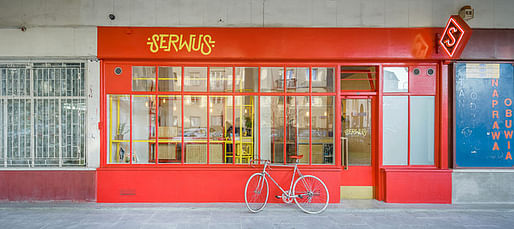

Architects' project text: "Recently, hamburgers and other types of food from distant places of the world have become extremely popular in Warsaw. However, [the designers] always felt sentimental about the typical Polish toasted baguettes called 'zapiekanka' which were common fast-food in the 90s and were sold in hideous booths on markets or in trailers...At Serwus we decided to experiment with the vision of zapiekanka. Apart from the reference to classics we created variations with original and healthy ingredients. The entire spatial idea relates to the market booths where virtually everything was sold in Warsaw in the 90s."
Fumo
by MFRMGR Architekci and SUPER SUPER
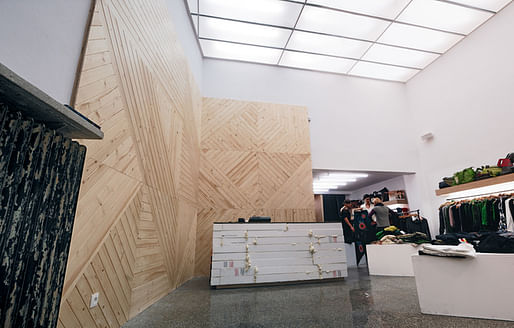
Architects' project text: "[Previously a pharmacy,] the interior of the Fumo store in Warsaw, Poland, was designed and renovated in express fashion. Only five weeks passed between the commission and the grand opening, all of it compounded by an exceptionally low budget..."
Tuk Tuk
by MFRMGR Architekci. Collaboration: Monika Kolon, Zofia Wyganowska, Pamela Krzyszczak
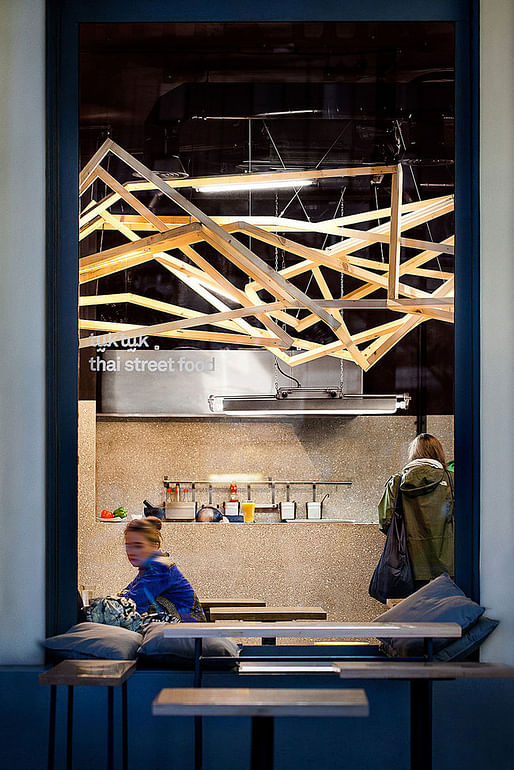
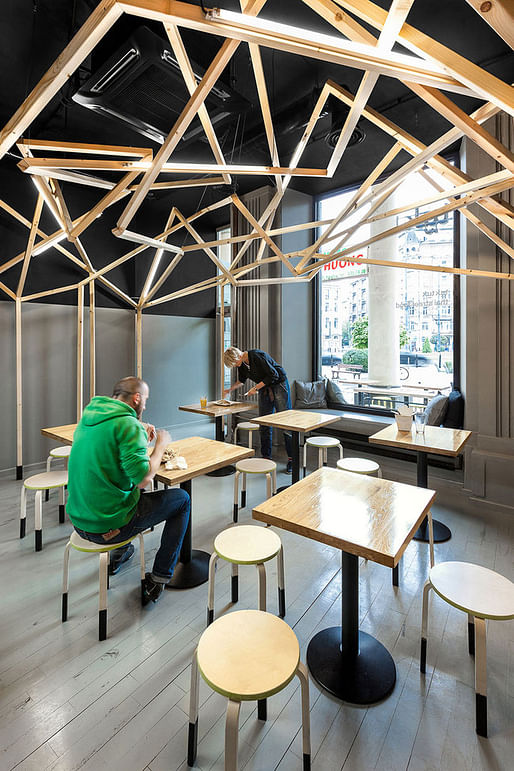
"The concept of TUK TUK was to bring the people living in Warsaw closer to the atmosphere of street food in Bangkok. [According to the designers,] it seems rather like a lack of order and rules, a bit of chaos and food prepared with fresh local products which tastes and smells delicious...Thai cuisine in Poland is usually associated with expensive sublime meals in large restaurants. There is no tradition of eating fresh food in small restaurants in the city or street food. The design of TUK TUK does not contain any strict principles or a mathematical formula – it is merely an impression and a freely transformed collection of memories and associations brought here from a trip to Thailand."
All photos and quoted text courtesy of Lukasz Kos.
Check out Archinect's previous travel guides here.
No Comments
Block this user
Are you sure you want to block this user and hide all related comments throughout the site?
Archinect
This is your first comment on Archinect. Your comment will be visible once approved.